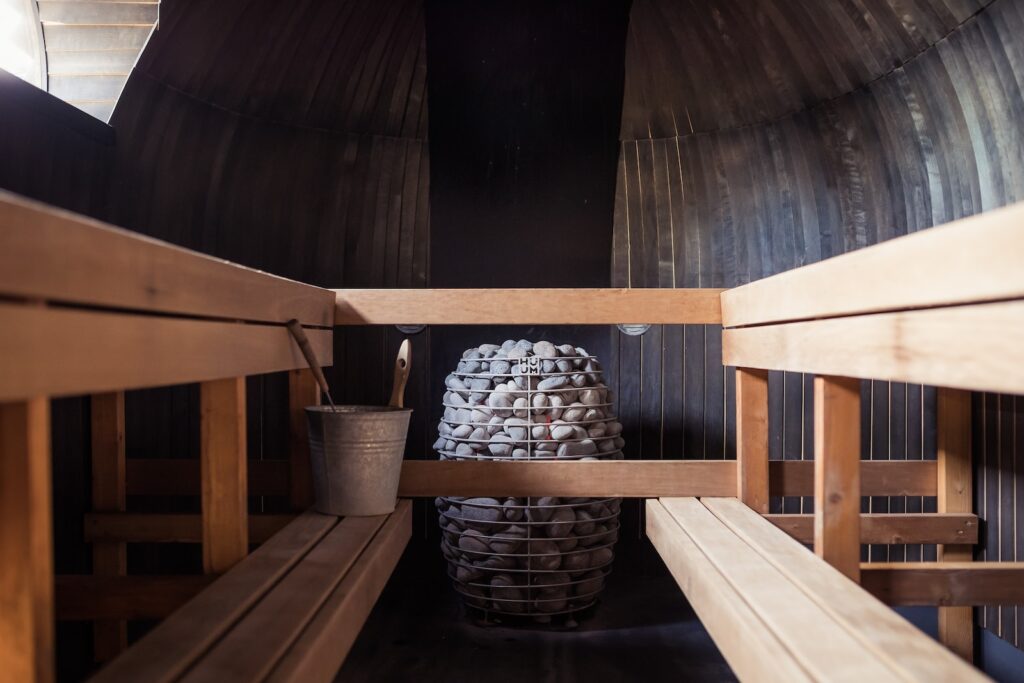
Comparing Infrared Saunas and Traditional Saunas
Infrared saunas and traditional saunas are both incredible for health and wellness. If you’re trying to decide between an Infrared sauna and a traditional sauna, then this article may be for you.
Have you been considering incorporating sauna sessions into your wellness routine? While both types of saunas offer numerous health benefits, some key differences between them are worth considering before making a choice.
Table of Contents


Key Differences Between Infrared Saunas and Traditional Saunas:
Heat Source:
- Traditional Sauna: A traditional sauna uses heated rocks or a stove to generate high temperatures, typically between 150°F to 195°F (65°C to 90°C). The heat warms the air, which, in turn, warms your body as you sit in the sauna cabin.
- Infrared Sauna: An infrared sauna utilizes infrared heaters to emit infrared light directly onto your body, bypassing the need to heat the air. This results in a milder environment, usually between 120°F to 150°F (49°C to 66°C).
Air Quality:
- Traditional Sauna: Due to the high temperatures, traditional saunas can sometimes feel stifling, making it difficult to breathe comfortably. The air may become drier, which can lead to dehydration.
- Infrared Sauna: Infrared saunas maintain a more pleasant and breathable atmosphere since they do not heat the air excessively. This makes it easier to spend more time in the sauna without feeling overwhelmed.
Heating Time:
- Traditional Sauna: Traditional saunas generally take a bit longer to reach their operating temperature, usually requiring 30 to 45 minutes to preheat before use.
- Infrared Sauna: Infrared saunas heat up relatively quickly, usually within 10 to 20 minutes, making them more energy-efficient and convenient for spontaneous sauna sessions.
Sweating and Detoxification:
- Traditional Sauna: The high heat of traditional saunas promotes profuse sweating, which can aid in detoxification and cleansing of the skin.
- Infrared Sauna: Even though infrared saunas operate at lower temperatures, they can produce more intense sweating, facilitating detoxification similar to traditional saunas.
Health Benefits:
- Both saunas offer numerous health benefits, including stress reduction, improved circulation, pain relief, and relaxation. Additionally, some studies suggest that infrared saunas may have specific benefits for the cardiovascular system and skin health.
Installation:
- Traditional Sauna: Traditional saunas are usually custom-built and require more space. They are often made of wood and may need professional installation.
- Infrared Sauna: Infrared saunas come in various sizes and can be easily installed in homes. They are available in portable options as well, making them more adaptable for smaller spaces.
Summary of Comparison for both:
- Temperature and Humidity: Traditional saunas are hotter with higher humidity, while infrared saunas are cooler and less humid.
- Detoxification: Both induce sweating and aid in detoxification, with traditional saunas often causing more profuse sweating.
- Deep Tissue Penetration: Infrared saunas offer deeper tissue penetration, potentially benefiting certain conditions.
- Comfort: Infrared saunas are often more comfortable due to lower temperatures and humidity, catering to personal preferences.
- Cardiovascular Effects: Both types can improve cardiovascular health, but traditional saunas induce a more significant increase in heart rate due to higher temperatures.
Cost Comparison:
The cost of an infrared sauna versus a traditional sauna can vary widely based on several factors, including the type of sauna, size, materials, and additional features. Here’s a general comparison of the two:
- Initial Cost:
- Infrared Sauna: Infrared saunas are generally more affordable upfront. Basic models can start at around $1,000 to $2,500 for a portable unit, while larger, higher-end models can range from $2,500 to $6,000 or more.
- Traditional Sauna: Traditional saunas tend to be more expensive initially. Prices for a pre-built traditional sauna can range from $2,000 to $10,000 or more, depending on the size and materials used. Custom-built saunas can be even more expensive.
- Installation and Construction:
- Infrared Sauna: These are typically easier to install since they are often portable or come in pre-built kits. Installation costs are relatively low, and they don’t require a dedicated electrical circuit.
- Traditional Sauna: Traditional saunas may require more complex installation, including framing, insulation, and electrical work. This can increase the overall cost, especially if you opt for a custom-built sauna.
- Operating Costs:
- Infrared Sauna: Infrared saunas are generally more energy-efficient and cost-effective to operate. They typically use less electricity compared to traditional saunas, which need to heat the entire room.
- Traditional Sauna: Traditional saunas consume more energy because they heat the air in the sauna room, which requires more power. The operating costs can be higher as a result.
- Maintenance:
- Infrared Sauna: Infrared saunas are relatively low-maintenance. You may need to clean the heaters and replace them periodically, but they have fewer components to maintain.
- Traditional Sauna: Traditional saunas require more maintenance due to the heating elements, ventilation, and the potential for wear and tear on the wood surfaces. Regular cleaning and occasional repairs may be needed.
- Health Benefits and Experience:
- Infrared Sauna: Infrared saunas are often praised for their therapeutic benefits, such as detoxification and improved circulation. They operate at lower temperatures (usually around 120-140°F or 49-60°C) and are more comfortable for some users.
- Traditional Sauna: Traditional saunas operate at higher temperatures (typically 160-195°F or 71-90°C) and provide a different heat experience. They are also known for their health benefits, including relaxation and stress relief.
- Space Requirements:
- Infrared Sauna: Infrared saunas are often smaller and more compact, making them suitable for smaller spaces or even inside existing rooms.
- Traditional Sauna: Traditional saunas require more space, and they are typically built as standalone structures or in dedicated sauna rooms.
Ultimately, the choice between an infrared sauna and a traditional sauna depends on your personal preferences, available space, and desired sauna experience.
Whether you opt for the classic and intense heat of a traditional sauna or the gentle warmth of an infrared sauna, both offer unique but incredible benefits for your overall well-being and healthspan.
Research and Sources:
“Infrared Saunas vs. Traditional: Which Is Better?” Dr Michael Ruscio
You May Also Enjoy:



